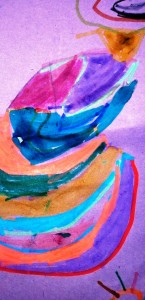Art therapy is an accessible form of psychotherapy that uses art media and artistic expression as its primary mode of expression within a safe and secure therapeutic setting. In art therapy the patient uses art materials to express thoughts, feelings and inner conflicts and confusions which can then be shared and reflected upon with the art therapist, helping to relieve difficult and painful feelings. Very often it is difficult for patients to talk directly about difficulties, feelings and fears, so communicating through art is frequently easier and more appropriate. Sometimes words can’t be used or found to describe thoughts and feelings but the process of image making and the image itself can be a powerful way of speaking when words are difficult.
Art has long been known to have therapeutic properties. When creating visual images, people “draw” mainly on the right side of their brains – the same side that is used before spoken language develops and where visual memories are stored.
Whilst Art therapy is relatively new in Spain it well established in countries such as the United States and Great Britain where it is recognized by the Health and Care Professions Council (HCPC). Art therapists work with children, young people, adults and the elderly with a wide range of difficulties, disabilities or diagnoses in schools, prisons, hospitals, mental health units, day centres and in private practice.
Art therapy can be provided as a group or individual therapy, depending on the needs of the patient or client. It is not necessary to be “good at” art to benefit from art therapy: it is not a recreational activity or an art lesson, the central idea being to give the patient the liberty to use the art materials in their own way.
